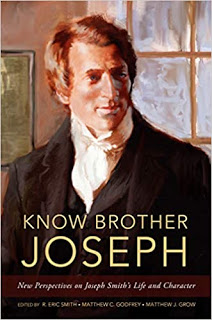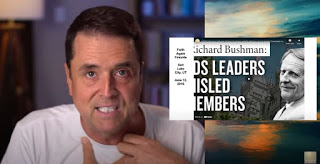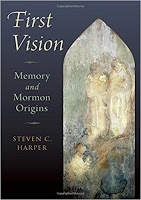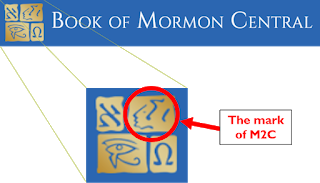M2C, SITH and Orwell
George Orwell, writing about the defeatist attitude of the Left in World War II: One has to belong to the intelligentsia to believe things like that: no ordinary man could be such a fool.*
People can believe whatever they want to believe. People can talk themselves into believing all kinds of things.
But we also like the things that we believe to make sense.
_____
M2C (the Mesoamerican/two-Cumorahs theory) tries to persuade people to reject the teachings of the prophets about the New York Cumorah because an anonymous article in the 1842 Times and Seasons claimed that ruins in Central America were left by the Nephites.
Even when it turned out that those ruins long post-dated the Book of Mormon, the M2Cers persisted because they had already convinced themselves the prophets were wrong about Cumorah. Everything written on the topic since then is an effort to confirm that bias.
The alternative approach that more and more Latter-day Saints adopt is to accept the teachings of the prophets about Cumorah and proceed from there. That makes sense to us.
We don’t mind if others disagree. We just want everyone to make informed decisions.
_____
SITH (the stone-in-the-hat theory) tries to persuade people to believe that Joseph never really translated anything because some of his contemporaries claimed he merely read words off a stone in the hat and never even used the plates. Even the critics at the time realized this was a lame diversion from the real issue; i.e., what was behind the curtain when Joseph dictated the Book of Mormon?
The 1834 book Mormonism Unvailed ridiculed SITH because it undermined the entire narrative of the plates. As the book pointed out, if Joseph never used the plates when he translated, what good was the testimony of the witnesses?
Mormonism Unvailed used the term “unvailed” only once (apart from the title), and that was in connection with the curtain that Charles Anthon had described. “This young man was placed behind a curtain, in the garret of a farm house, and, being thus concealed from view, put on the spectacles occasionally, or rather, looked through one of the glasses, decyphered [sic] the characters in the book.”
Here’s how Mormonism Unvailed explained its title.
That there has been, from the beginning of the imposture, a more talented knave behind the curtain, is evident to our mind, at least ; but whether he will ever be clearly, fully and positively unvailed and brought into open day-light, may of course be doubted.
https://archive.org/details/mormonismunvaile00howe/page/278/mode/2up?q=unvailed
The entire book is an effort to “unvail” Mormonism by figuring out what was behind the curtain when Joseph was dictating. Was Joseph translating plates, or reading from the Spalding manuscript? As someone said recently, is it Joseph Smith or Joseph SITH?
Those of us who believe Joseph and Oliver when they said Joseph translated the plates reject the Spalding theory. We believe there were plates behind the curtain. That makes sense to us.
We don’t mind if others disagree. We just want everyone to make informed decisions.
We see that SITH contradicts what Joseph and Oliver said and is based on the demonstration at the Whitmer home that David Whitmer described, as I discussed in detail in A Man that Can Translate.
The Spalding theory was the predominant explanation for the Book of Mormon for 100 years. It depended on the common understanding that Joseph dictated from behind a screen, which is the only thing he could do given he was commanded not to let anyone see the plates or U&T.
To defeat the Spalding theory, David Whitmer, Emma Smith, and others related SITH accounts, based on the demonstration. They emphasized there was no screen or curtain, and that Joseph had nothing to read from, which makes sense. The demonstration was conducted in the open. That was the point. But the demonstration was not the translation, which took place in the small room upstairs in the Whitmer home.
Church leaders who knew Joseph personally also knew all about Mormonism Unvailed and the SITH-sayers. They certainly knew a lot more than today’s scholars, who concoct their theories based on scraps of paper instead of personal interaction with Joseph and Oliver. These leaders reaffirmed over and over that Joseph translated the plates with the U&T, the way Joseph and Oliver always said.
How difficult is this to understand?
_____
*for more context, see https://news.ycombinator.com/item?id=17647355 and citations there.
Source: About Central America












